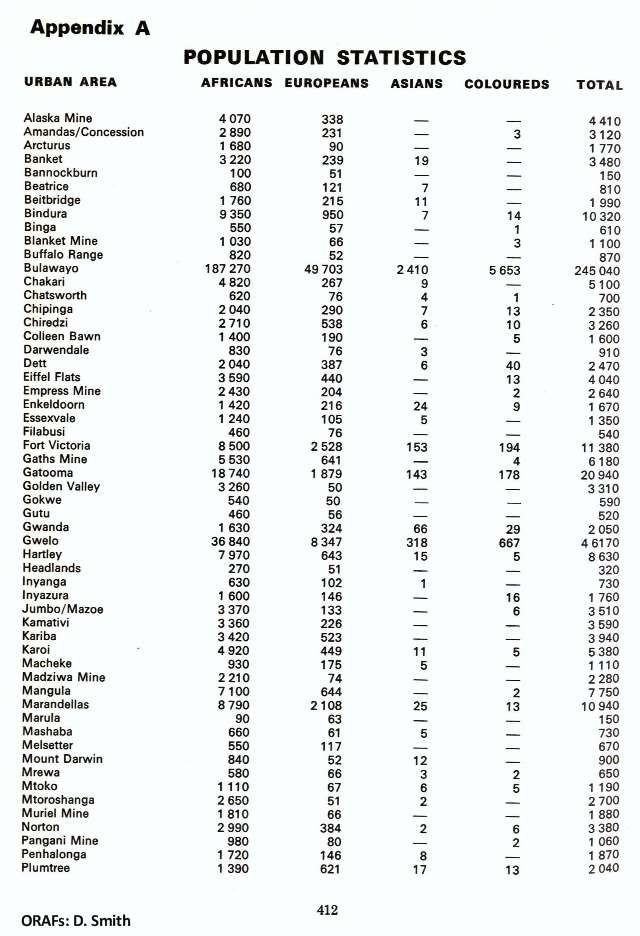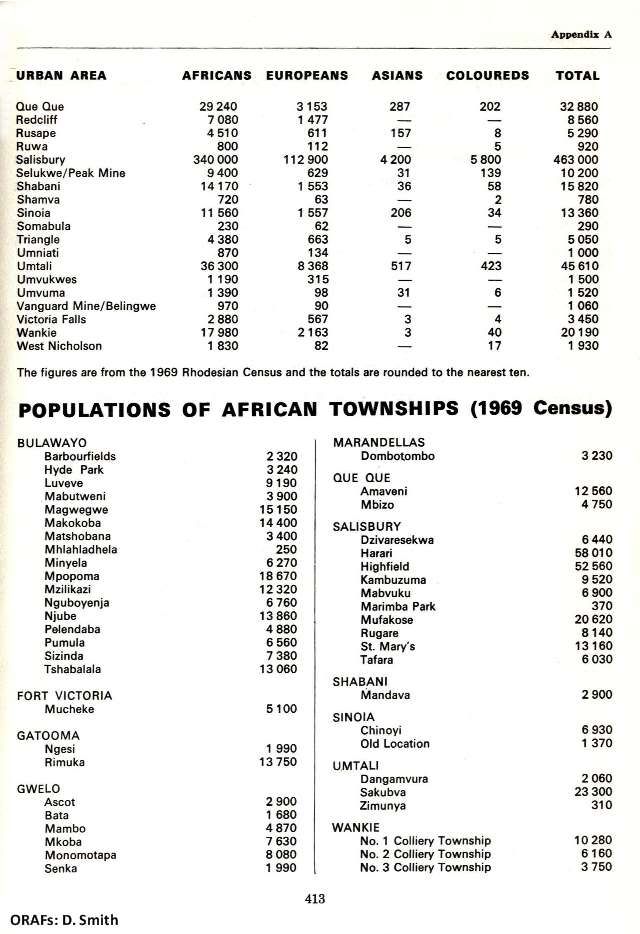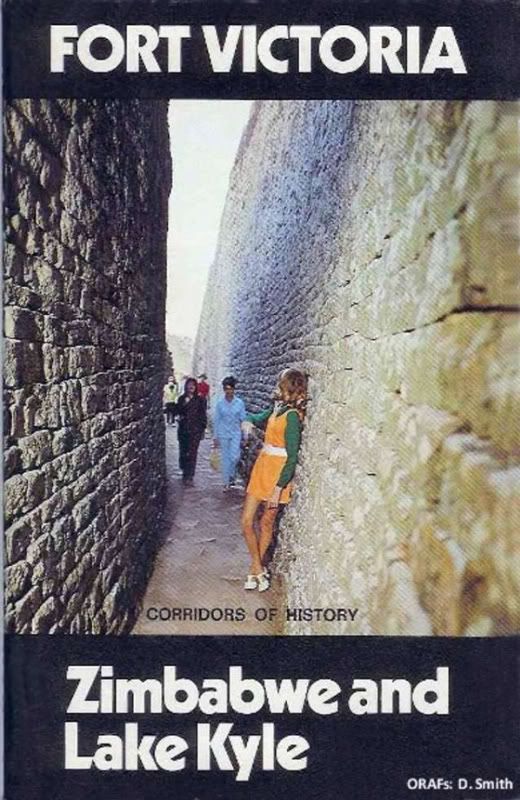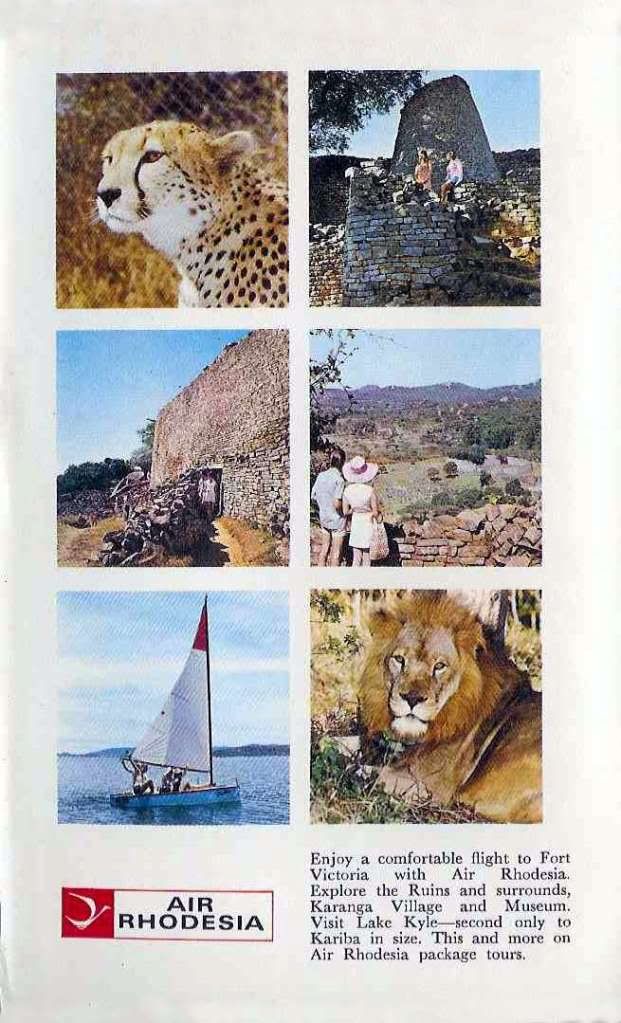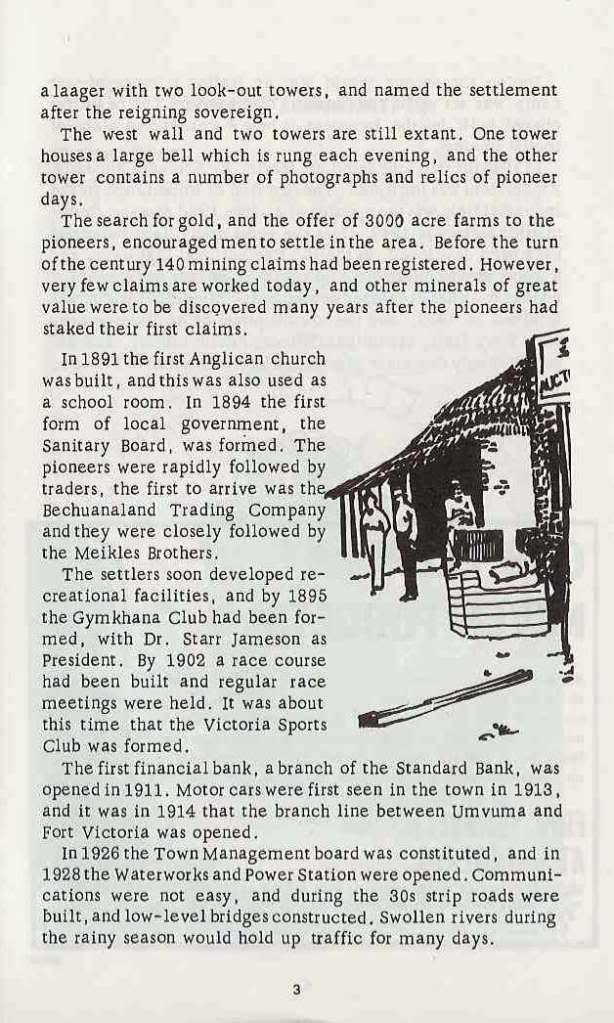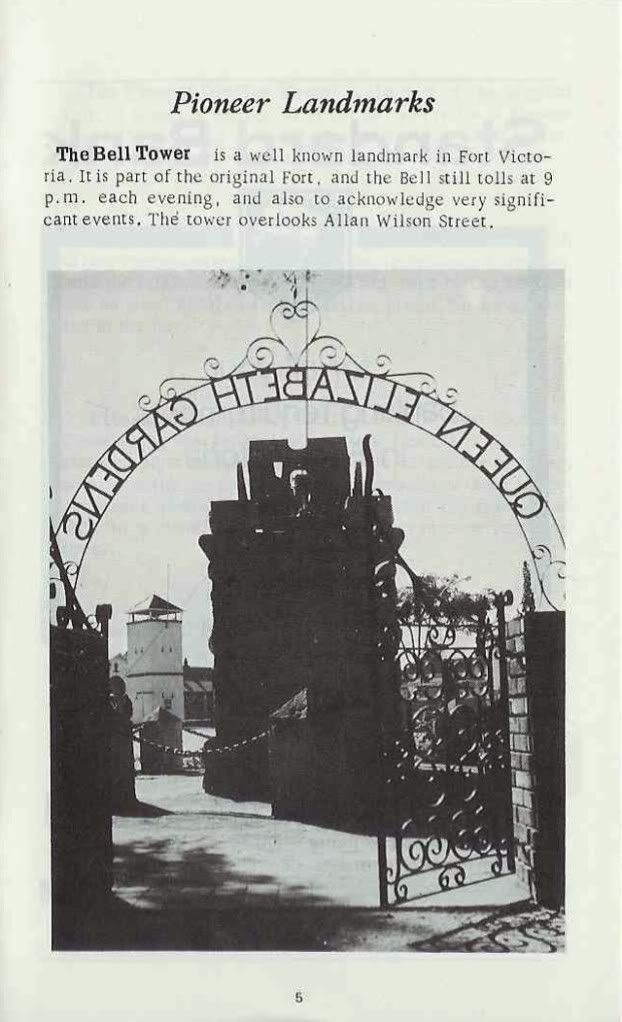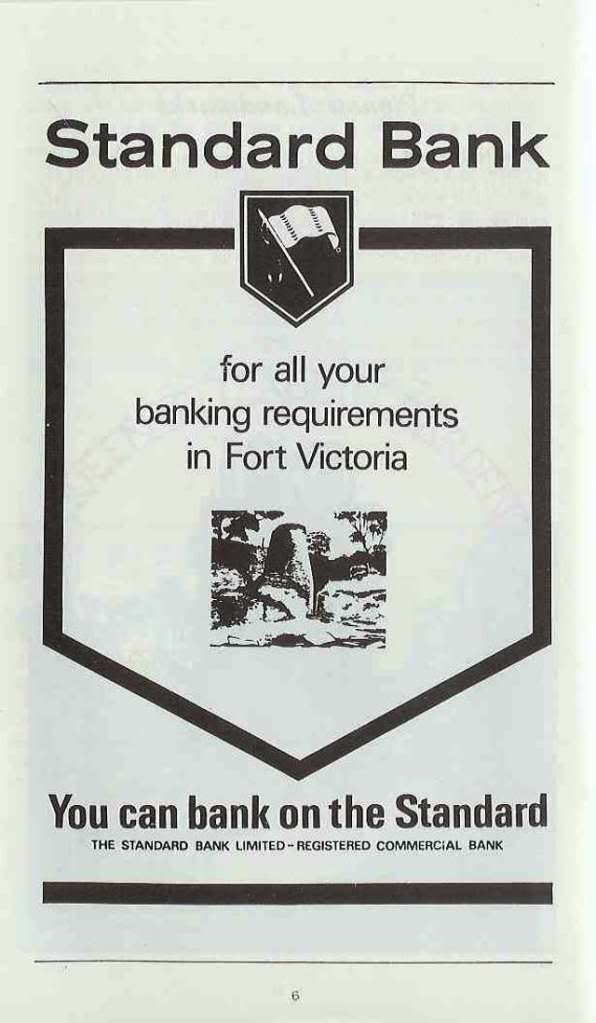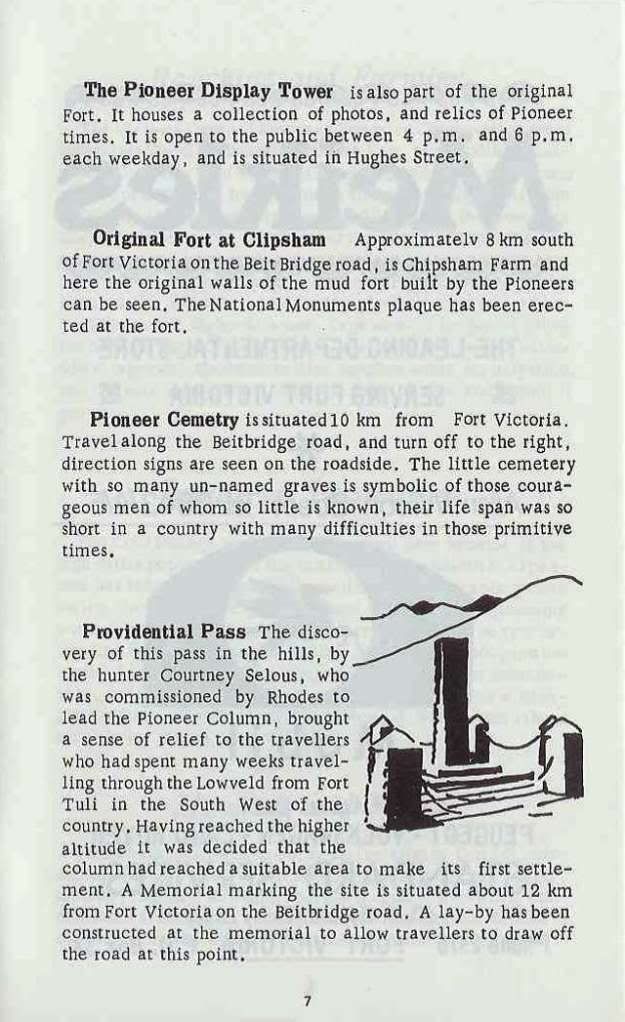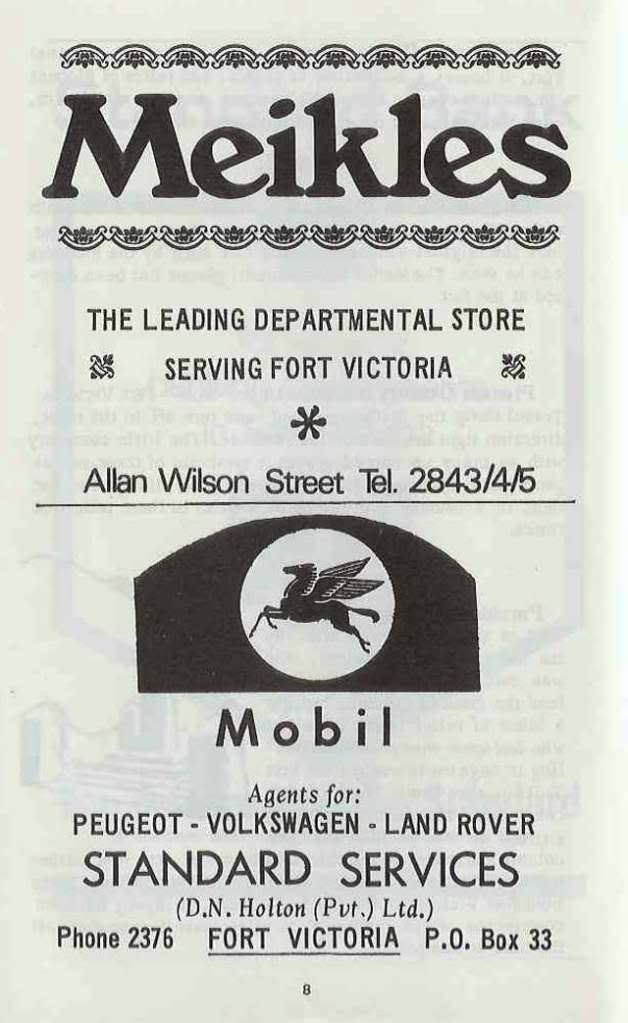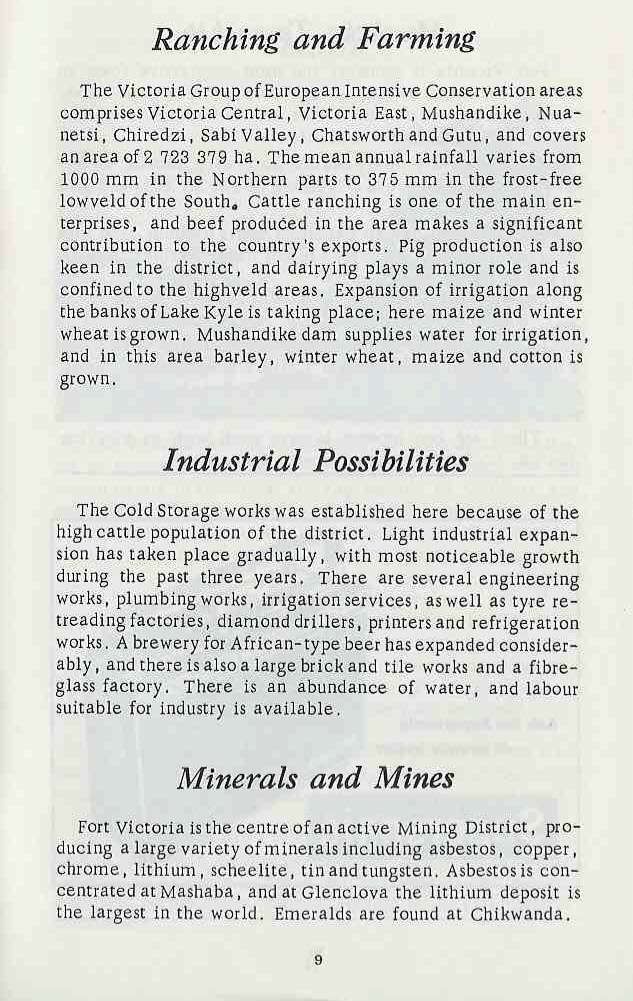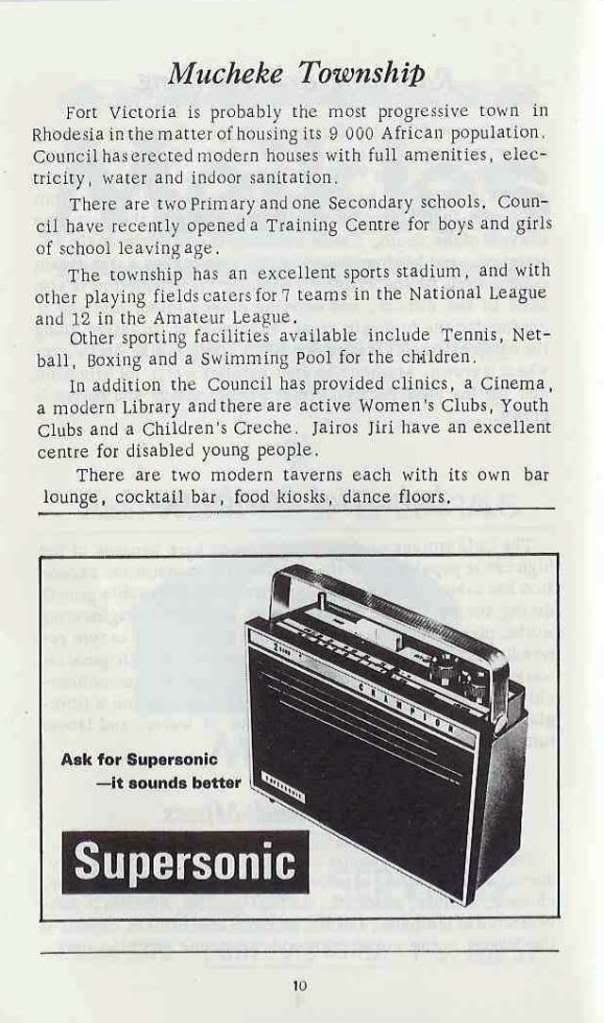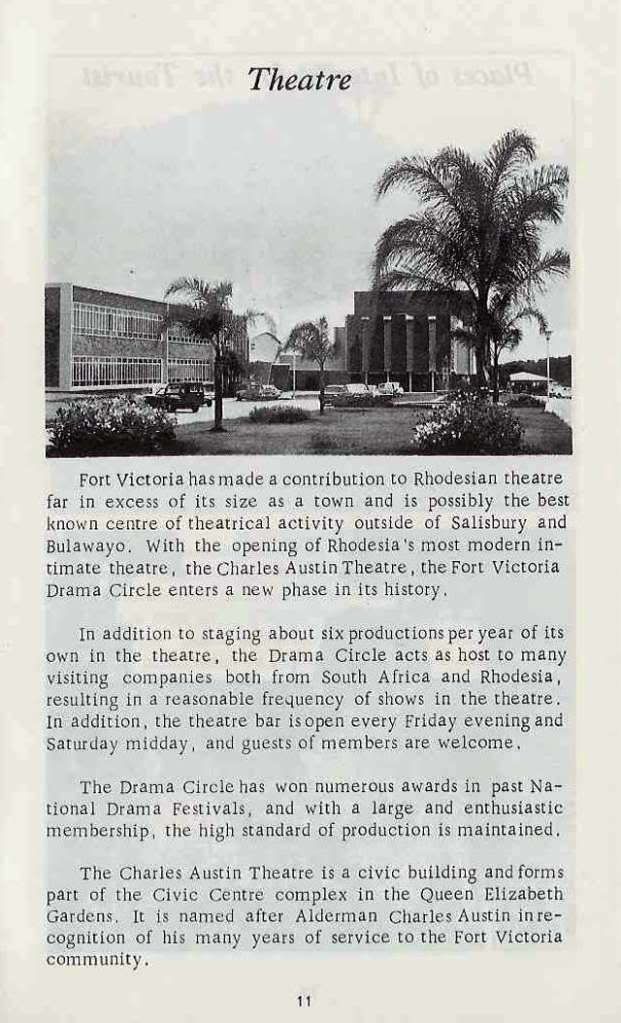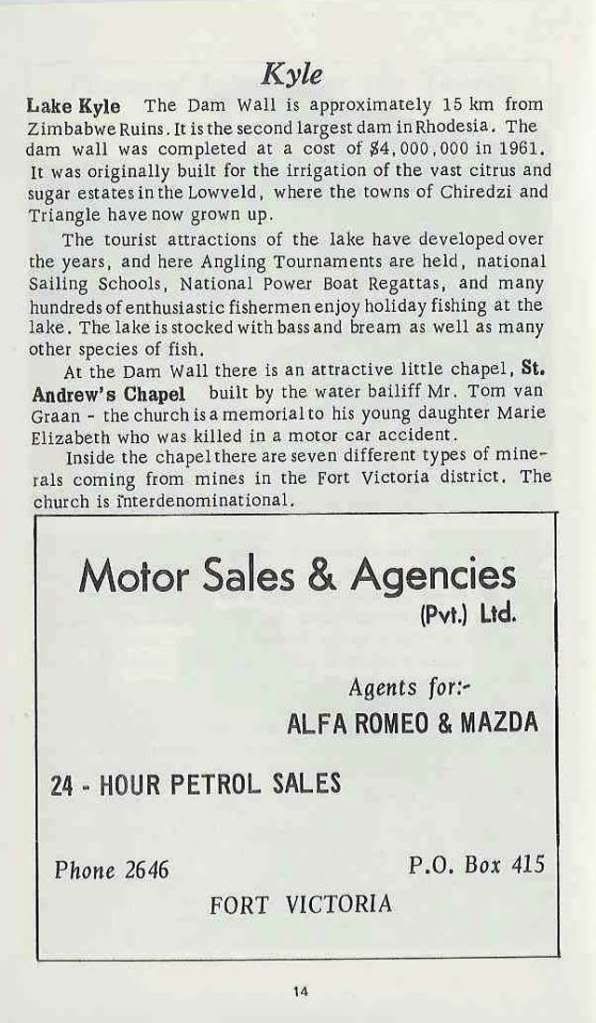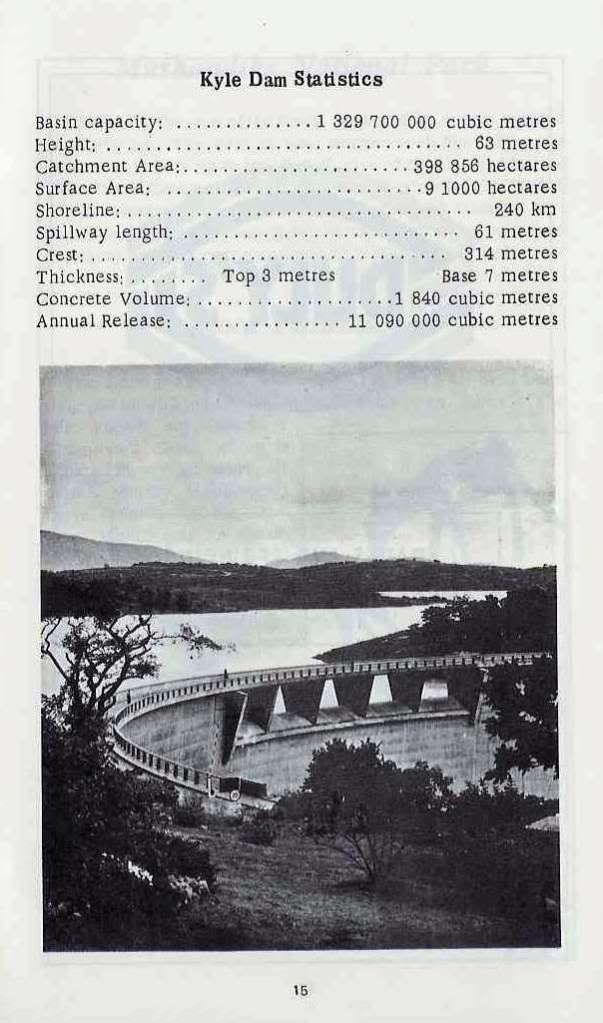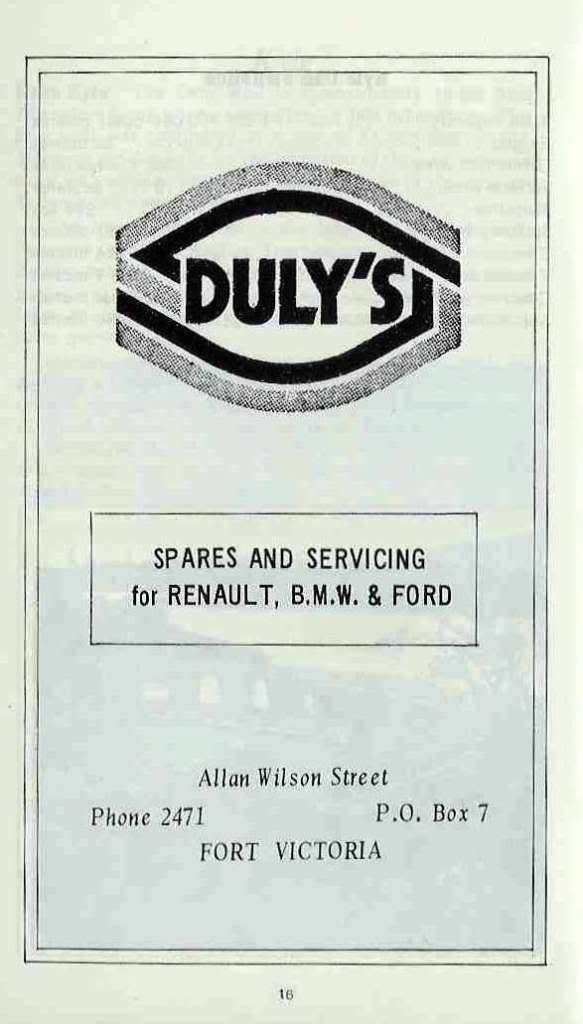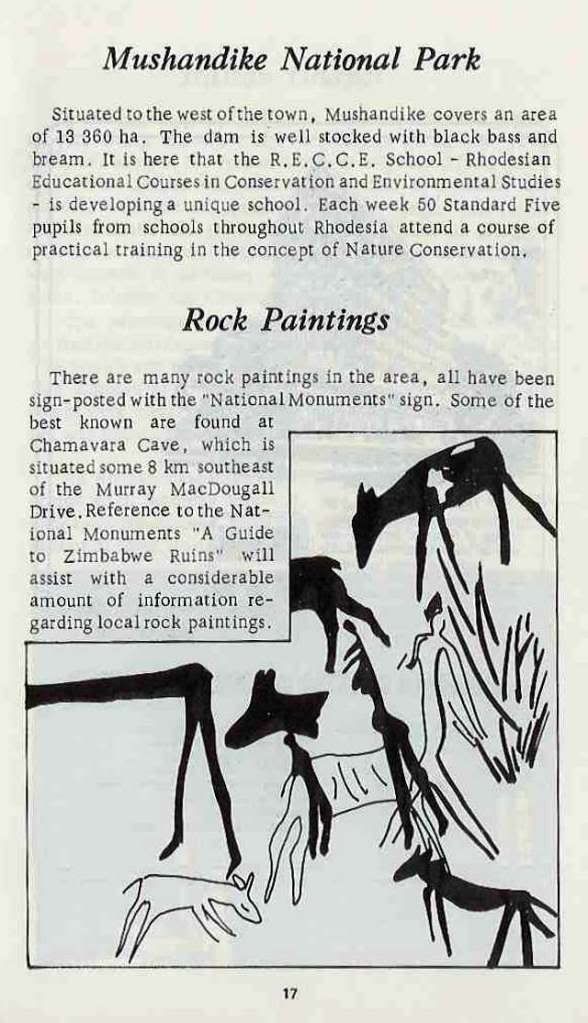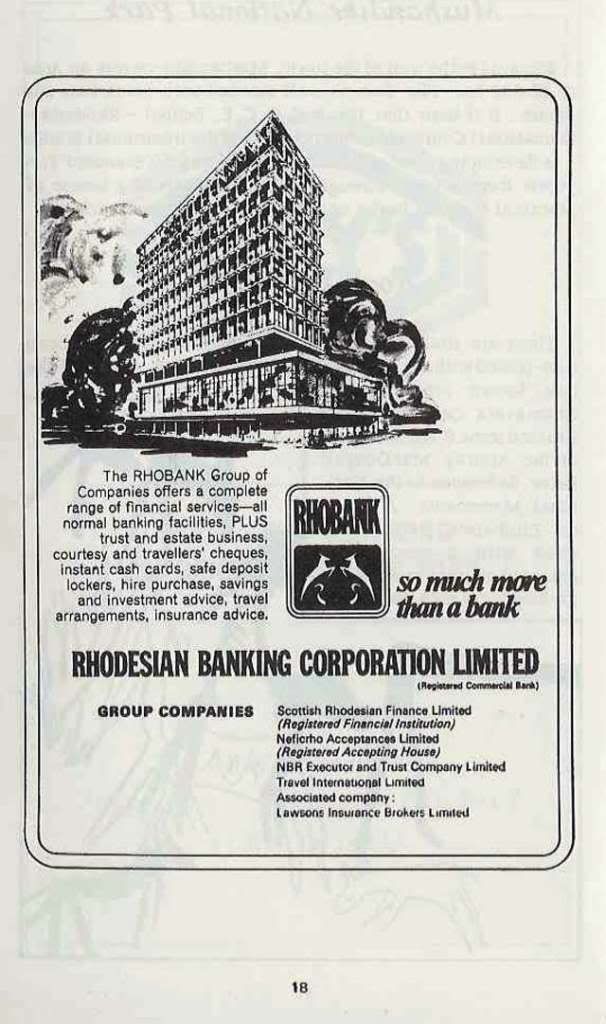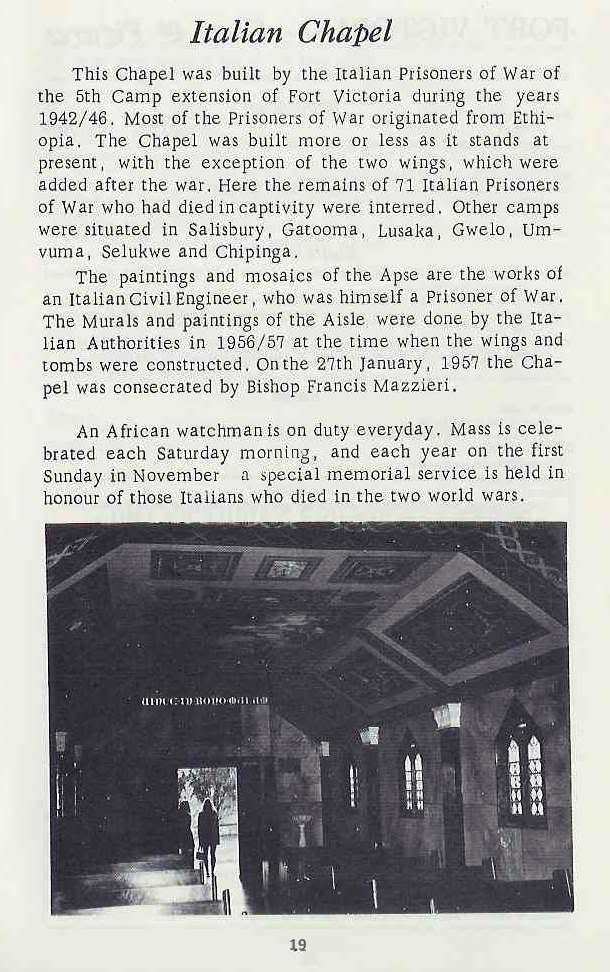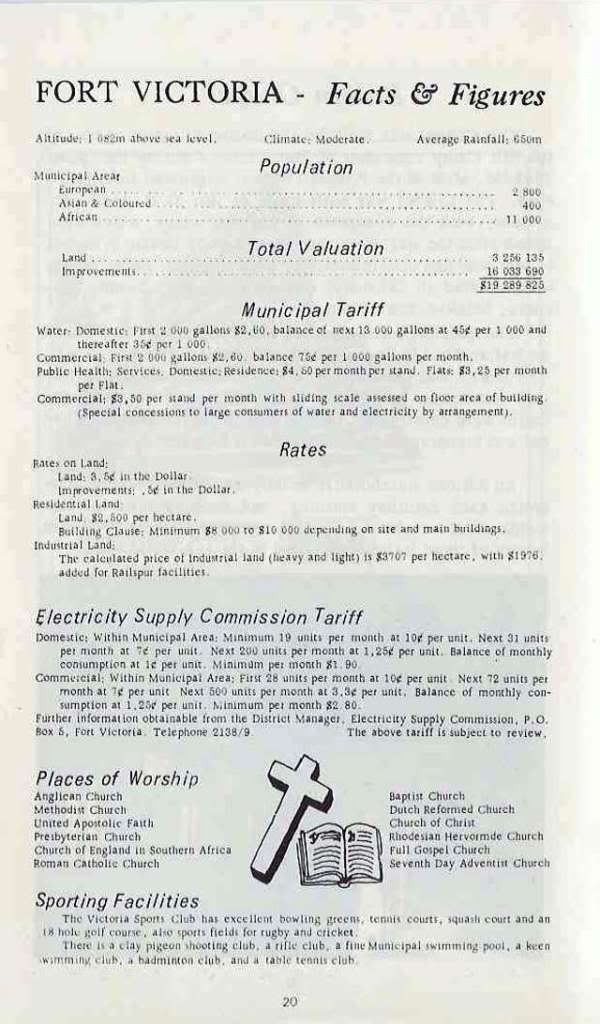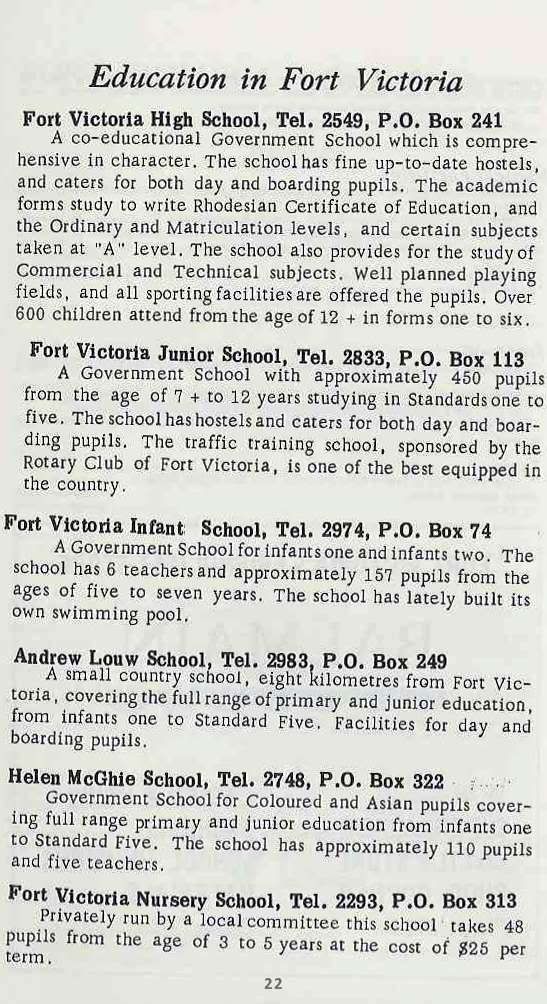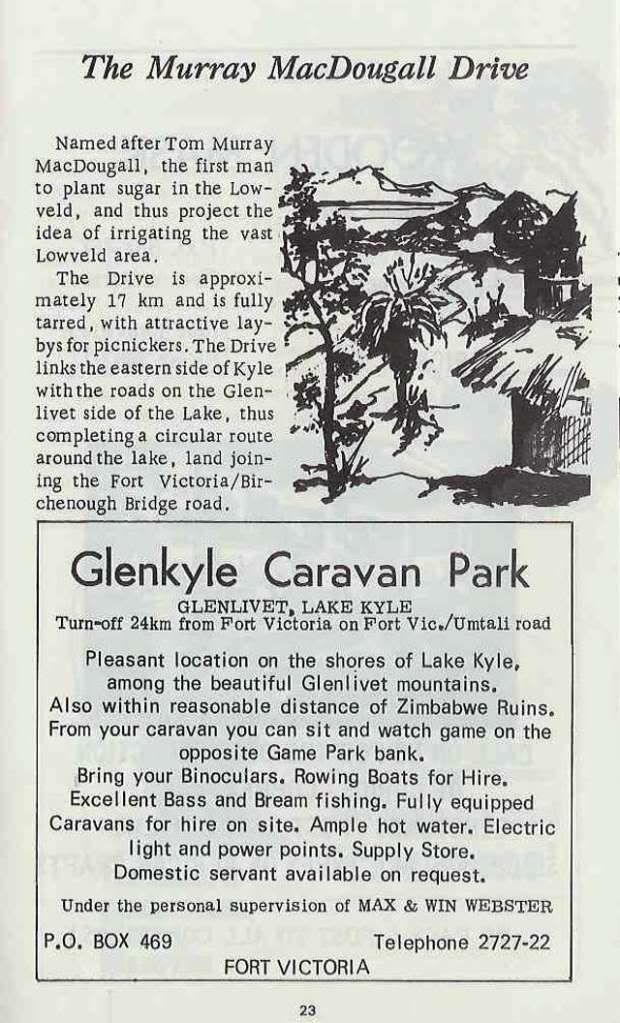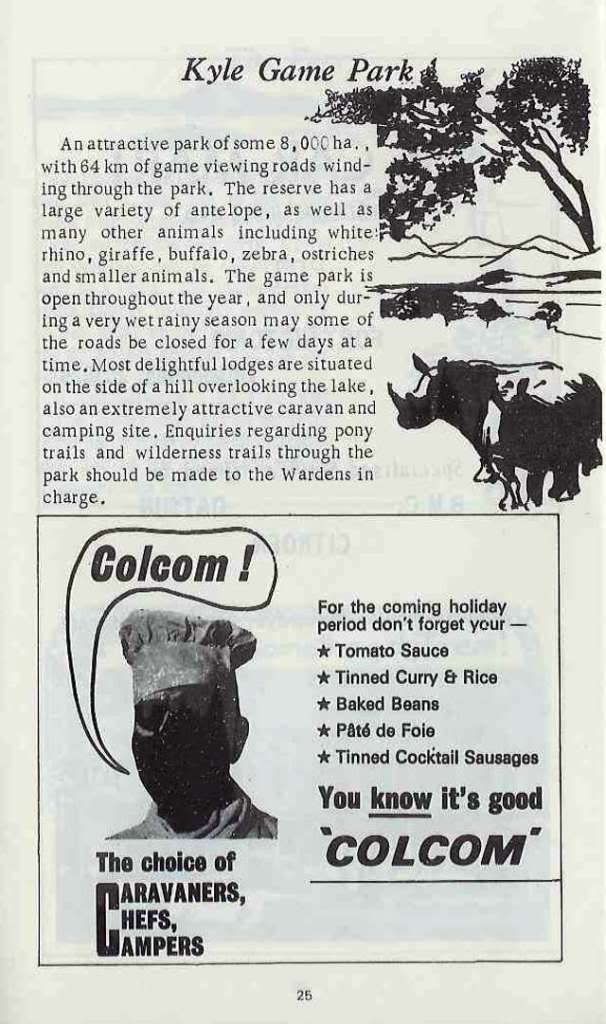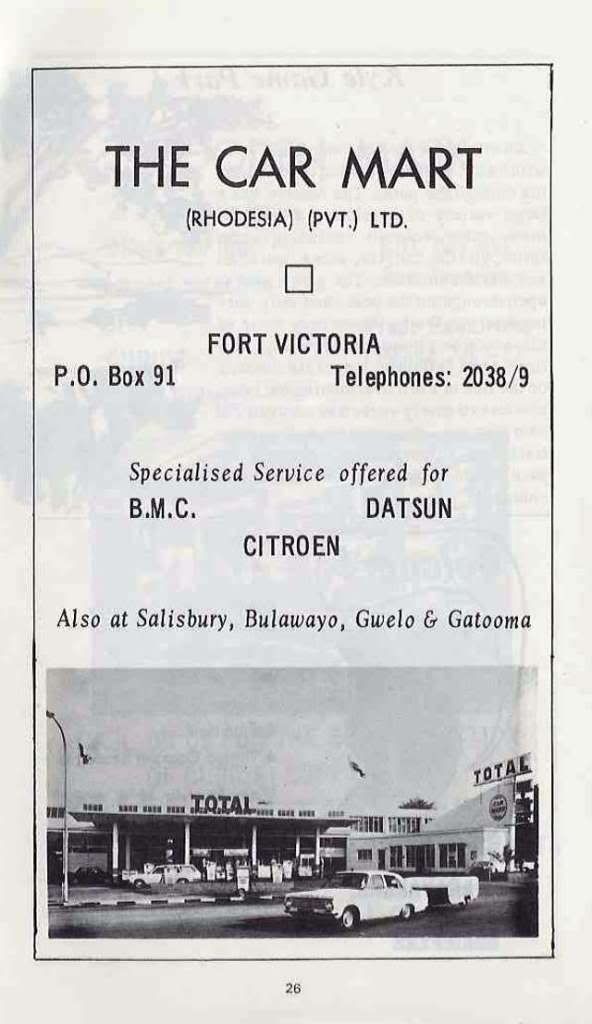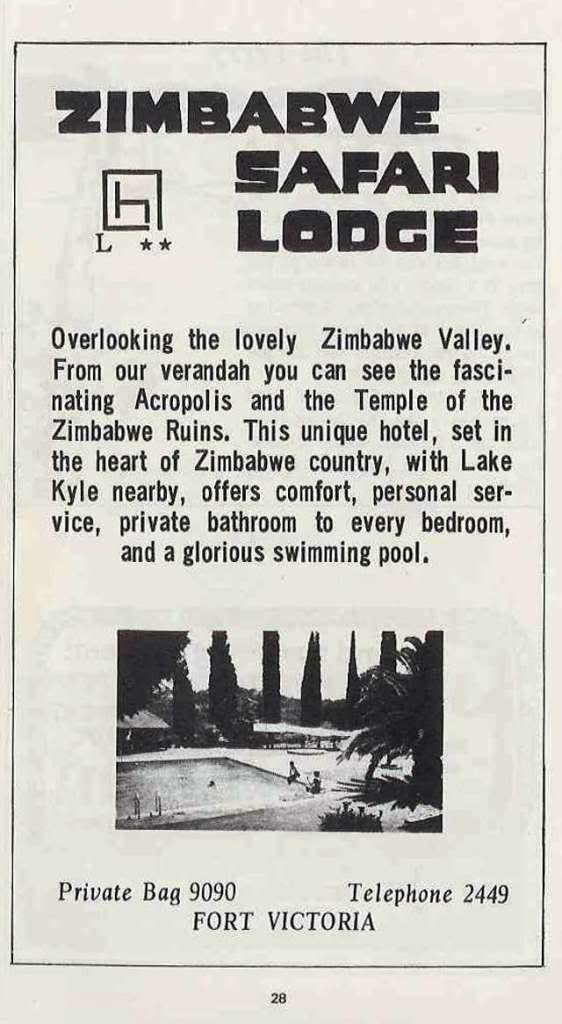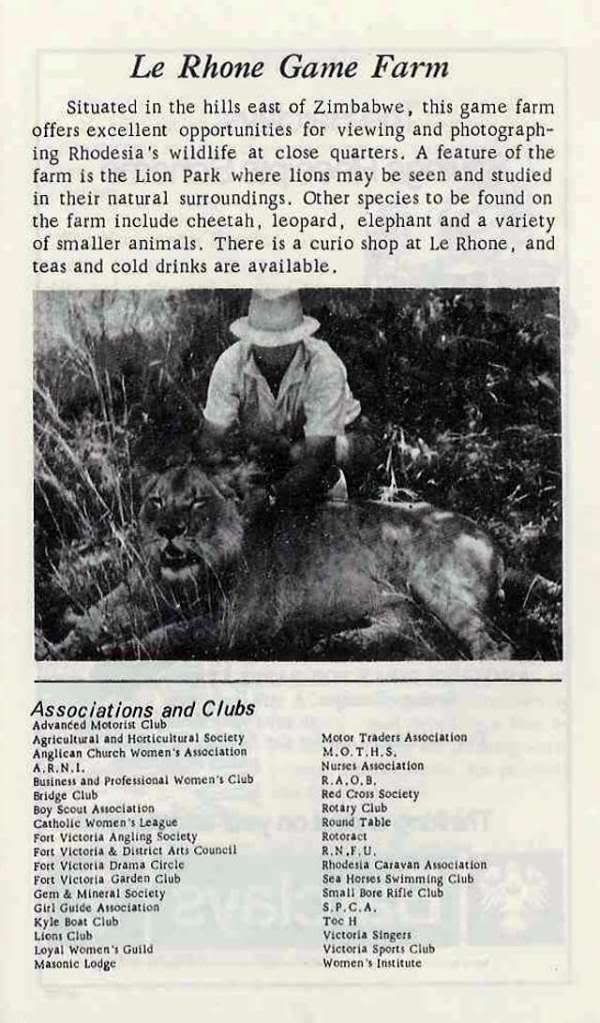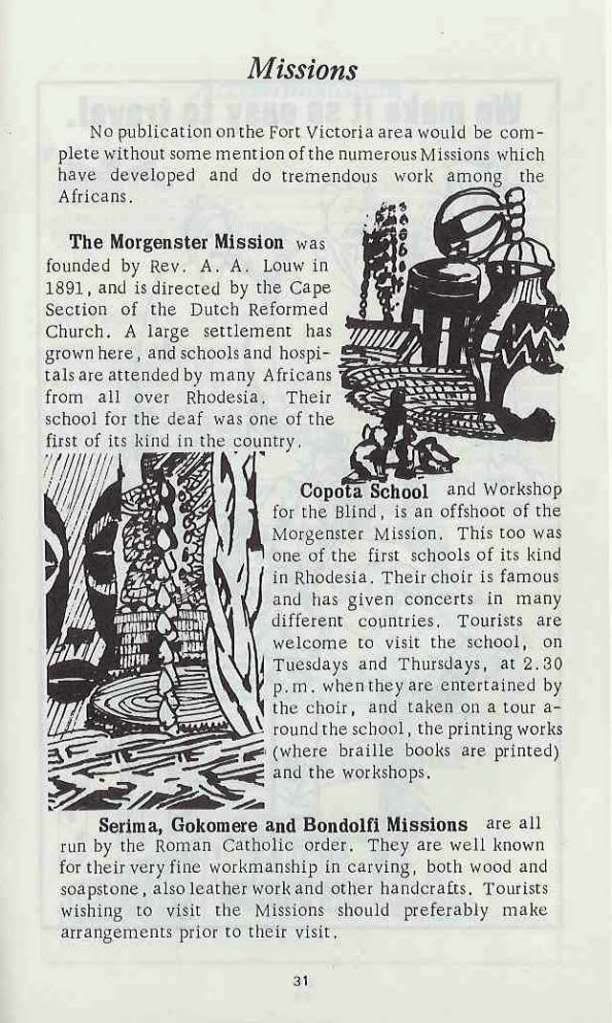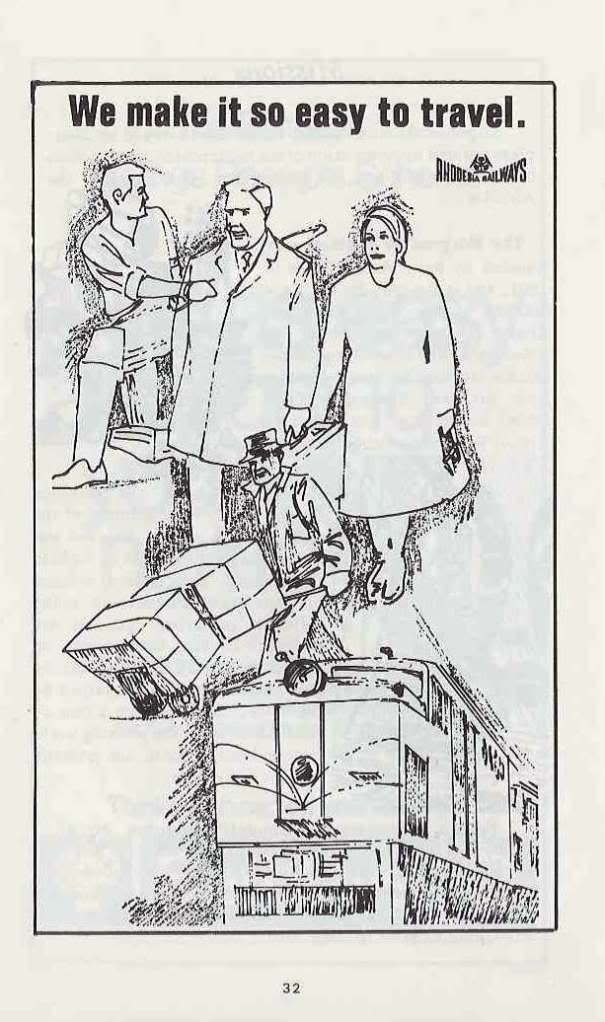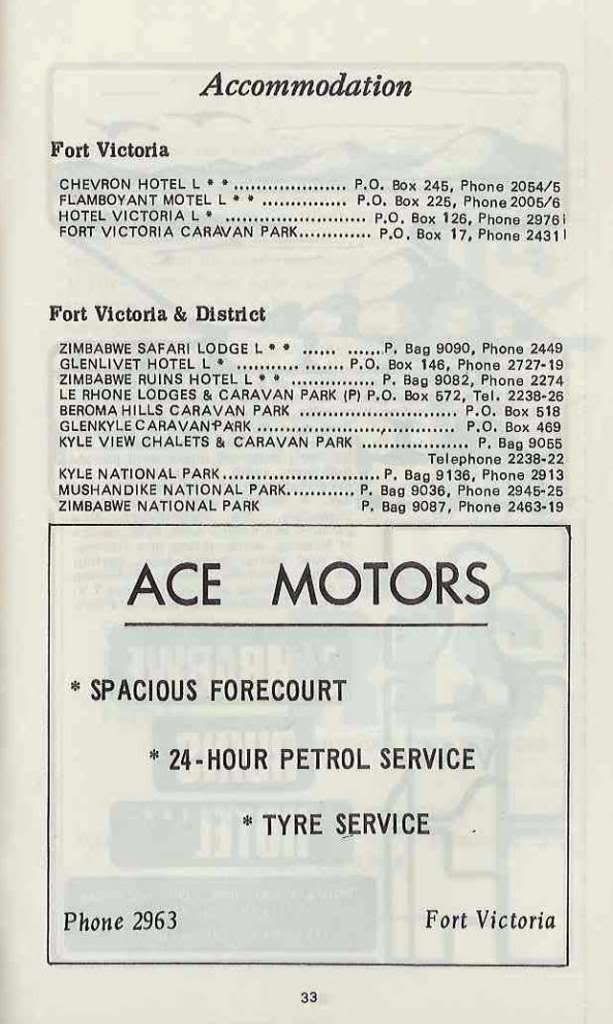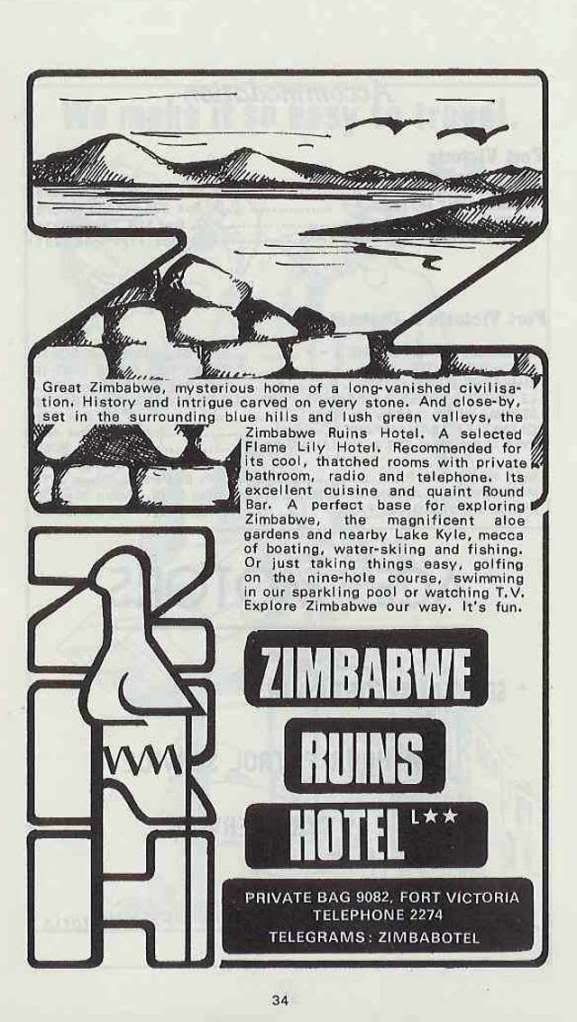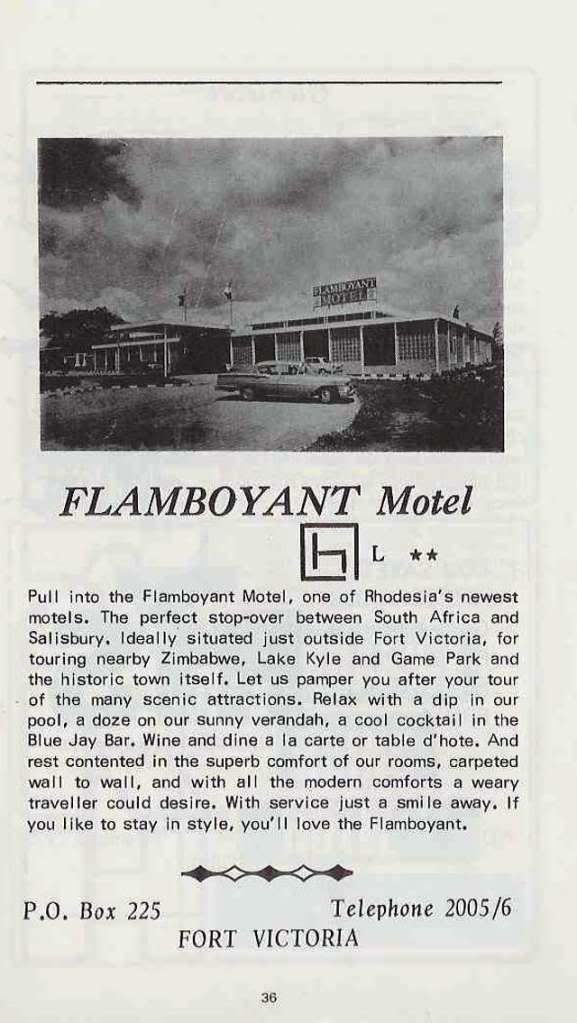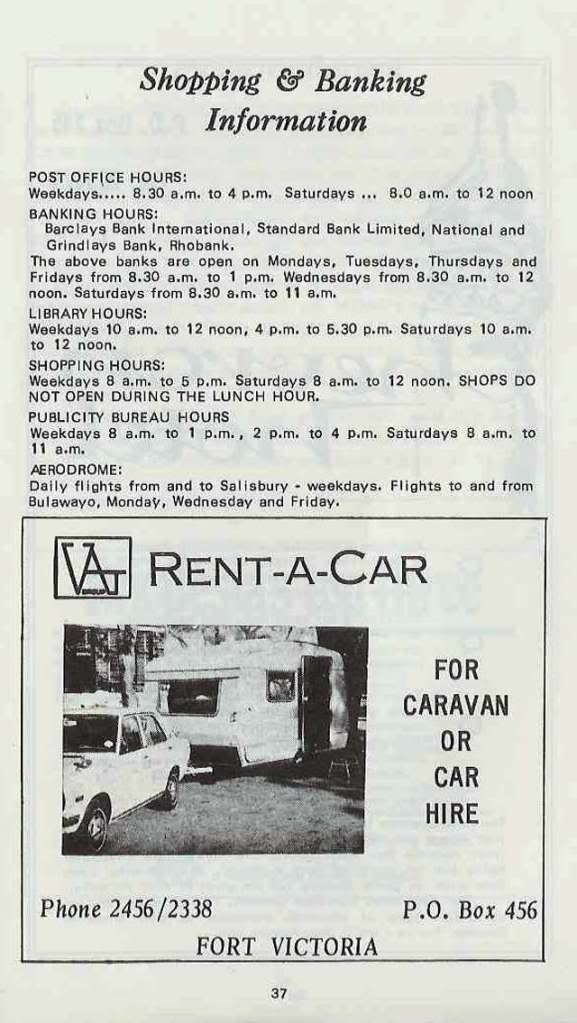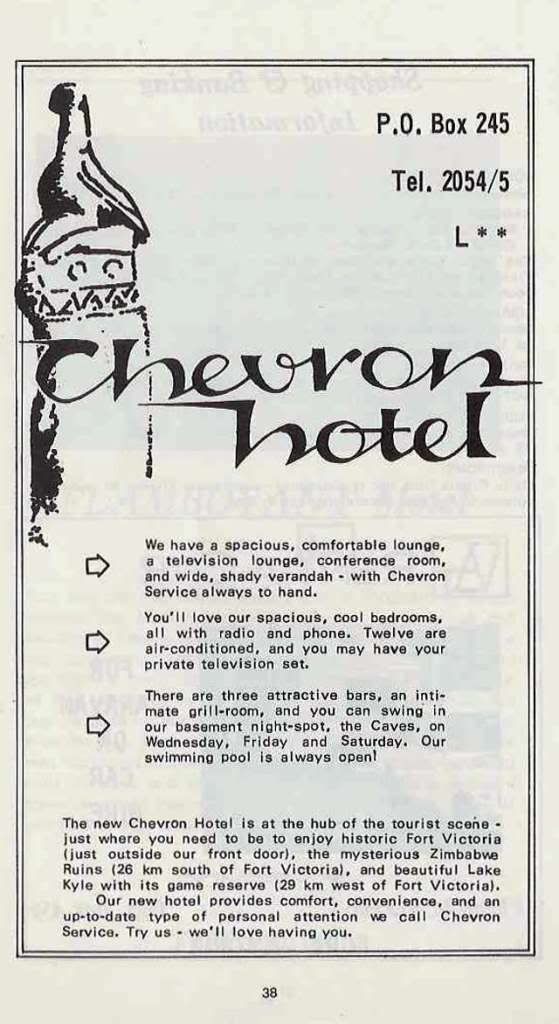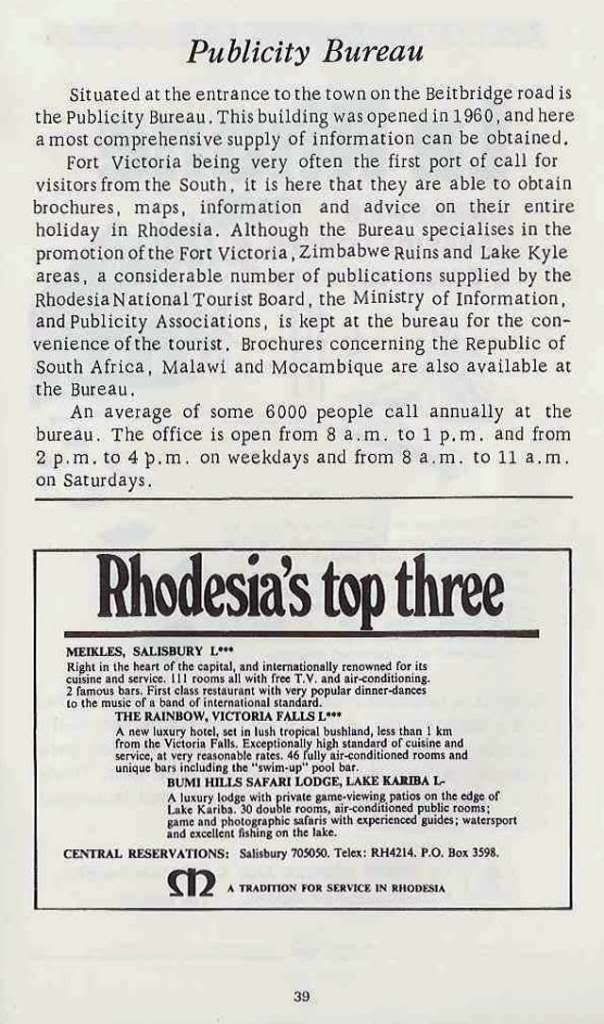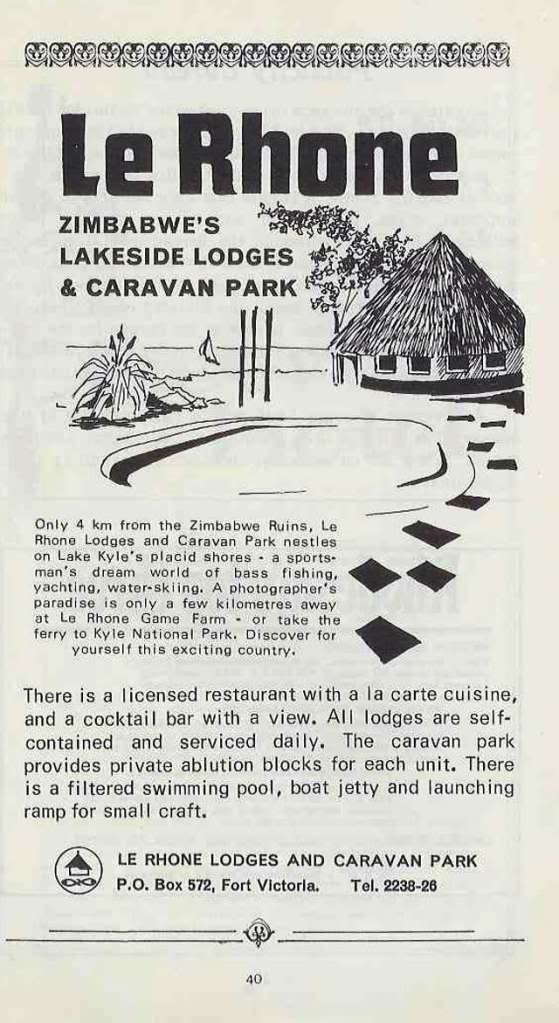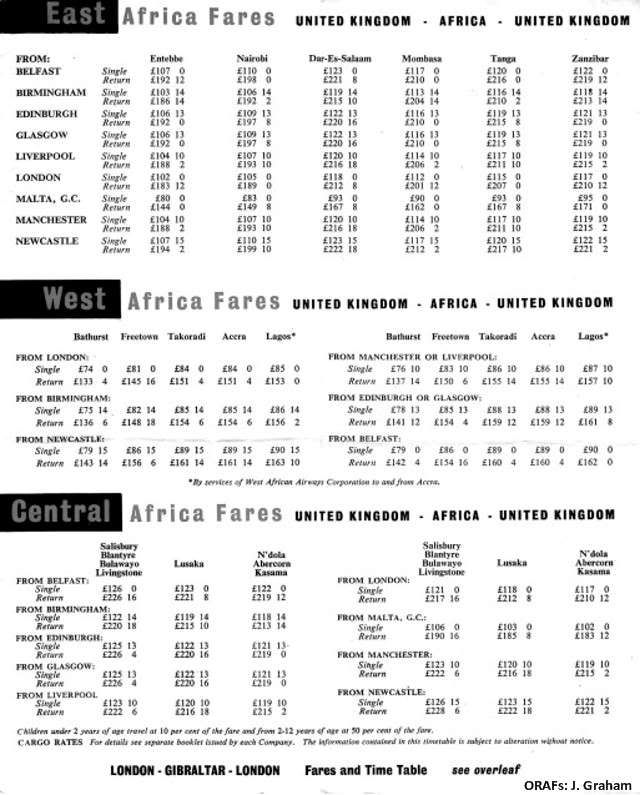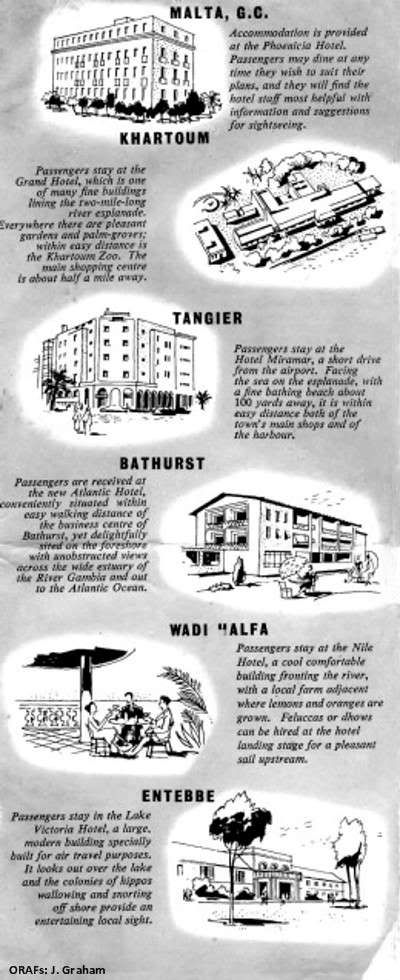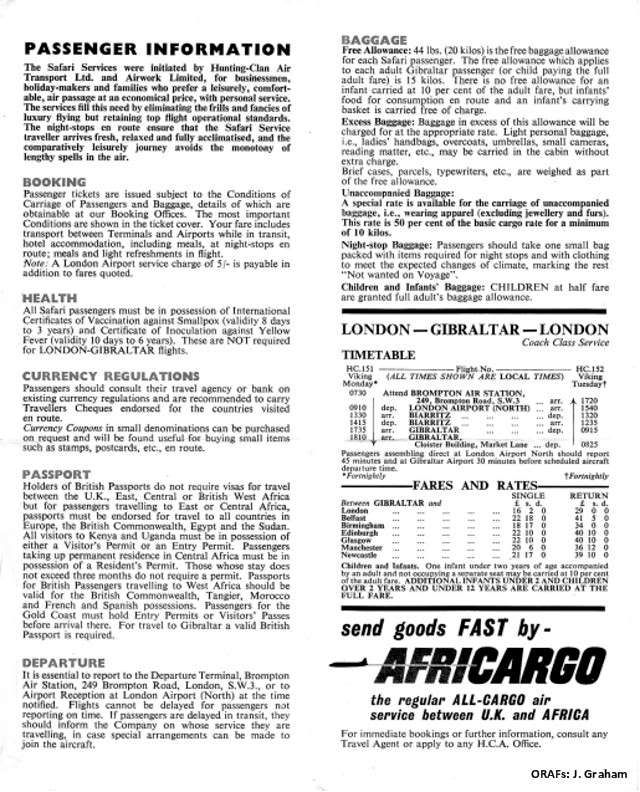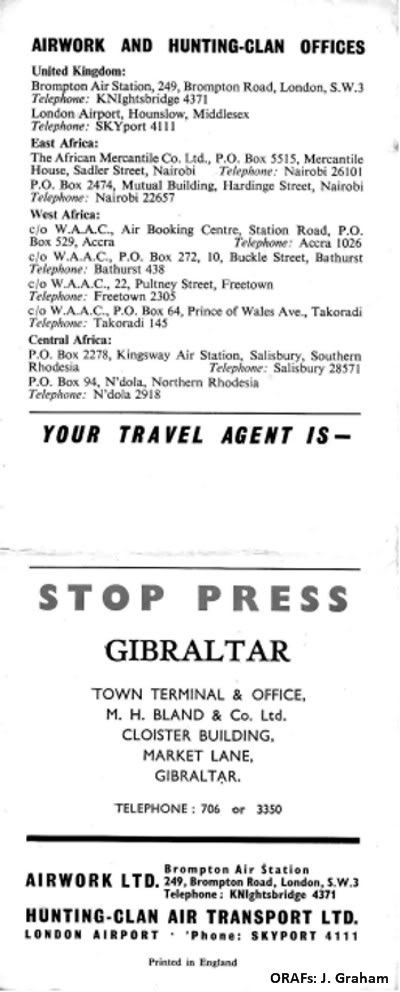Constitution of the Rhodesia Pioneers' and Early Settlers Society
Constitution as amended, 7/2/71.
Rhodesia Pioneers' and Early Settlers' Society
(With which is Incorporated the Pioneer Column Association of 1890)
CONSTITUTION
The Society shall he called—
RHODESIA PIONEERS' AND EARLY SETTLERS' SOCIETY.
It is recorded that the "Society came into being in Bulawayo, on the 12th day of September, 1904 and the original members of the Committee were: Colonel H. M. Heyman. M.L..C. (President); Colonel W. Napier, C M.G., M.L.C., and Major M. Heany (Vice-Presidents); Messrs. J. C. Jesser-Coope, H. Marshall Hole. Lieut.-Colonel W. B. Ramsay. Capt. W. Baxendale, Messrs. John E.
Scott, Sidney Redrup, W. Currie. and J.Wightman.
It, is further recorded that on 19th August, 1961, there was incorporated with the Society the Pioneer Column Association of 1890.
1.— It’s objects shall be:
(a) To record and encourage the preservation and publishing of the history of the early occupation of the country: together with the names of those men and women whose struggles against almost insurmountable difficulties enabled Rhodesia to become a valuable addition to the British Empire; and to maintain esprit de corps amongst those who came to Rhodesia in the early days and who shared In the exceptional trials and troubles of the occupation and settlement of this country, and amongst their descendants.
(b) To undertake commemorative and traditional services in honour of our Founder, Cecil John Rhodes, and of the pioneers and early settlers of Rhodesia.
(c) To carry on the tradition of the Pioneer Column Association of 1890 in" particular the commemoration of the foundation of Rhodesia, through the ceremony of the Hoisting of the Flag on the 12th September in each year in Salisbury by a descendant of a member of the 1890 column.
(d) To administer bequests and donations to the Society, and to promote, or support, from the funds of the Society any educational. benevolent or other object which the Society may from time to time deem desirable.
2.- Thy Headquarters of the Society shall be in Bulawayo.
3.—(a) The following men and women being of wholly European descent, and over the age of 21 years, shall be eligible for membership:—
(I) Members of the Mashonaland Occupation Column of 1890 and members of the Matabeleland Occupation Column of 1893;
(II) Any person who on or before 31st December. 1896, was resident in Mashonaland, Matabeleland or the Tati District.
(III) All missionaries, hunters, traders and others who were in Rhodesia previous to 4th November, 1898;
(IV) All who assisted in the repression of the Rebellions in Mashonaland and Matabeleland of 1896 and 1897.
(V) Any descendant of any person qualified under paragraph (1),(ii)", (iii) and (iv) of this Rule.
(VI) The spouse of a Pioneer or Early Settler and widow or widower of a Pioneer or Early Settler, as defined in paragraphs (i), (ii), (111) and (iv) above.
(VII) The spouse of a full member or the surviving spouse of a deceased full member providedthat such spouse shall have been married to the member for not less than ten years.
Such a spouse, when elected, shall have voting rights at any meetings of the Society or its branches.
4. (1) All applications for membership shall be sent to the General Secretary, to be placed before the Executive Committee which may reject the application if it is not satisfied that the applicant is qualified for membership, or If It is satisfied that the applicant Is for any other reason unsuitable to become a member of thisSociety.
(1a) Any person whose application for membership has been rejected or refused in terms of Rules 4 (1) and (2) may appeal to the Council, whose decision shall be final.
(2) Application for registration for future membership may be made by or on behalf of persons under the age of 21 years. If registers! by the Executive Committee, the applicant on payment of the subscription shall automatically be entitled to become a member on attaining the age of 21 years unless new facts have emerged of an exceptional nature which may compel the Executive Committee to refuse membership.
(3) On the recommendation of the Branch Committee through the Executive Committee, the Council may elect as On Honorary Member any person who has performed outstanding service to the Society or in the furtherance of the objects of the Society. An Honorary Member shall have no right to vote at any meetings of the Society.
(4) It shall be the responsibility of the Executive Committee to ensure that a complete and' accurate register of membership, and of the names of those persons registered for future membership, In terms of Rule 4 (2). Is at all times maintained.
(6) If it be proved to tile satisfaction of the Executive Committee that any member of the Society has been guilty of conduct justifying such action, the Executive Committee may;—
(a) Call upon him to resign;
(b) With or without giving him opportunity to resign, expel him; and
(c) Impose any other minor penalty it may think fit;
Provided that such member shall be given the opportunity to make his defence to the Executive Committee and shall have the right of appeal to the Council and, if he resigns or is expelled after the lapse of one year, apply to the Council for re-instatement as a member.
Any steps taken by the Executive Committee in terms of this paragraph shall be reported, in. writing, to the Council, with reasons for the action taken. The Branch to which the member belongs shall likewise be informed.
5.(a) The rights and powers of the Society shall be exercised by a Council, to be constituted us hereinafter set forth.
(b) The Society may acquire, by purchase, or otherwise, land, premises or other property, and may perform any other legal acts necessary for the attainment of the object? of the Society and shall have power to mortgage property or to borrow on overdraft.
(c) The Executive Committee may engage or dismiss stuff on such terms and conditions as it may decide.
6.- (a) Branches of the Society shall be established In such areas as the Council may prescribe from time to time; provided that there be at least twenty fully paid up members residing in the area so prescribed.
(b) Upon the formation or' u Branch, all members of the Society resident in its area shall become members of that Branch.
(c) Members resident In ail area in Rhodesia or elsewhere in which no Branch exists may attach themselves to any Branch by giving notice in writing to" the Secretary of that Branch, and to the General Secretary.
(d) A Branch shall be autonomous in its own affairs and may make by-laws for the conduct of such affairs, provided that its by-laws and proceedings do not conflict with this Constitution or with any prior decision of the Council, or that, should they conflict with any subsequent decisions of the Council, they shall cease to that extent to have effect. Any such by-laws shall be approved by the Council.
(e) The Council may allot to a Branch such proportion of the subscriptions of the members of that Branch as it may deem advisable, and a Branch may impose with the leave of the Council for Its own purposes, a levy over and above the subscription prescribed by the Council.
(f) Should a Branch fall below 20 in its membership or becomes inactive It may be dissolved by the Council.
(g) At each annual general meeting of a Branch, the members of that Branch present at the meeting shall elect a Chairman to hold office from the date of that meeting until, and inclusive of, the next meeting. Upon his election as a Chairman of a Branch, such an officer shall become a Vice-President of the Society and shall hold office as such so long as he remains Chairman of "his Branch.
(h) Each Branch shall, before the end of each calendar year, hold an annual general meeting of its members at which it shall elect a Chairman, a Committee and an Honorary Secretary and Treasurer.
A quorum shall consist of ten members.
7.—(1) (a) The Council of the Society shall consist of a President, to be elected at each Annual Meeting of the Council, Vice-Presidents appointed in terms of 6 (g). Branch representatives appointed In terms of this rule and two members of the Executive Committee.
(1) (b) The Committee of each Branch shall appoint representatives, being paid up members of that Branch, to represent it on the Council, and may replace any representative provided that the number of representatives which any Branch may appoint shall be limited as follows:—
(1) A Branch having less than 70 members — one representative.
(11) A Branch having not less than 70 but less than 120 members’ two representatives.
(111) A Branch having not less than 120 members — three representatives.
(IV) If any Branch representative is elected to the office of President or Vice-President of the Society, he shall cease to be a representative of his Branch.
(2) (a) An annual meeting of the Council shall be called in the first quarter of each calendar year by the President, on the advice of the Executive Committee. Other meetings shall be called by him on the recommendation of the Executive Committee or within 50 days of his receipt of a request in writing by any Branch Committee that a meeting be held.
(b) Notice of any meeting of the Council shall be given by the General Secretary to members of the Council at least 30 clear days before the day appointed for such a meeting.
(c) The President shall take the chair at all meetings of the Council, or, if he is absent, the chair shall be taken by a Vice-President elected from among those present to preside over
that meeting.
(d) Eight members of the Council shall form a quorum.
(e) At each Annual Meeting the Council shall elect a President and an Executive Committee to hold office from the termination of each such meeting until and inclusive of the next such meeting and each officer shall be eligible for re-election.
(f) In the event of the office of President falling vacant during the year of office the Executive Committee. In consultation with" Branches may elect any member of the Society to act as President until the next Annual Meeting: of the Council.
(g) The Council may, at its Annual Meeting, or at such other times as may be necessary, elect committees to undertake such specific tasks as may be assigned to such a committee or committees.
(h) The Council may, at an Annual Meeting, elect an Honorary President raid Honorary Vice-Presidents who shall be members who have given distinguished service to the Society. Such officers may attend and engage in debate at any meetings of the Society or its branches, but.with the exception of the Honorary President who will have a vote, shall not be entitled to vote at such meetings unless attending in his own right as a member of the Council Executive Committee or Branch as the case may be.
8.—(a) The Executive Committee appointed at the Annual Meeting of Council shall comprise not less than three nor more than five members, with power to co-opt additional members, provided that at no time shall the co-opted members number more than one- third of the elected members.
(b) At its first meeting a newly elected Executive Committee shall elect a Chairman to preside over its meetings and a Vicc-Chairman to act for tho Chairman in his absence. Subsequent meetings of the Executive Committee shall be called by the Chairman, provided that he shall forthwith call such a meeting if requested to do so by a notice in writing signed by not less than two members of the Executive Committee and specifying the purpose of the meeting.
(c) Three members of the Executive Committee shall form a quorum.
9. (a) The Executive Committee shall conduct the day to day administration of the affairs or the Society, subject to any directions on policy or otherwise of the Council, and shall submit an annual report of the activities of the Society and of the financial position to the Council for its annual meeting.
(b) The Council shall submit an annual report o? the activities of the Society and of Its financial position to all members of the Society.
10.—(a) At any meeting of the Council or of the Executive Committee, or of Branches, decisions shall be arrived at by the majority vote of those present at the meetings who are members in good standing of the respective bodies and who are not otherwise precluded in the constitution from exercising a vote. In the event of an equality of votes, the presiding officer of the meeting shall have a casting vote.
(b) The Society shall keep proper books of accounts of its financial affairs find shall maintain Banking Accounts with Bulawayo Banks to he operated upon in such manner as the Executive Committee may direct.
11. (a) The Council shall appoint two Trustees in whom shall be vested all Investments, funds, securities, and other property of the Society, and such Trustees arc empowered, when authorized by the Executive Committee to bring and defend actions at law in the name of the Society, and to sell, lease, mortgage and deal with any property' of the Society. The Council shall have power to replace any Trustee who is unable or unfit to perform his office.
(b) The Council shall appoint a qualified auditor to audit the accounts of the Society.
12. The financial year of the Society shall be the calendar year.
13.(a) Any amendments to this Constitution shall be made by a two-thirds majority of the members of the Council.
(b) Notice of any proposed amendments shall be given to all Branches at least thirty days before such meeting, provided the Chairman of the meeting may in his discretion allow to be put to the meeting amendments to the amendments which do not affect the principle of a duly proposed amendment.
14. Any matter not covered by this Constitution, including any interpretation of the Constitution itself, shall be decided by the Council.
Preece & McKenzie - 76998
Thanks to Diarmid Smith for sharing his memories with ORAFs.
Recompiled by Eddy Norris
Due to this blog not being able to include photos with comments they are included as footnotes.
FOOTNOTE 1
Neill Jackson has made this image available to ORAFs. Thanks Neill.

Rhodesia Pioneers' and Early Settlers' Society
(With which is Incorporated the Pioneer Column Association of 1890)
CONSTITUTION
The Society shall he called—
RHODESIA PIONEERS' AND EARLY SETTLERS' SOCIETY.
It is recorded that the "Society came into being in Bulawayo, on the 12th day of September, 1904 and the original members of the Committee were: Colonel H. M. Heyman. M.L..C. (President); Colonel W. Napier, C M.G., M.L.C., and Major M. Heany (Vice-Presidents); Messrs. J. C. Jesser-Coope, H. Marshall Hole. Lieut.-Colonel W. B. Ramsay. Capt. W. Baxendale, Messrs. John E.
Scott, Sidney Redrup, W. Currie. and J.Wightman.
It, is further recorded that on 19th August, 1961, there was incorporated with the Society the Pioneer Column Association of 1890.
1.— It’s objects shall be:
(a) To record and encourage the preservation and publishing of the history of the early occupation of the country: together with the names of those men and women whose struggles against almost insurmountable difficulties enabled Rhodesia to become a valuable addition to the British Empire; and to maintain esprit de corps amongst those who came to Rhodesia in the early days and who shared In the exceptional trials and troubles of the occupation and settlement of this country, and amongst their descendants.
(b) To undertake commemorative and traditional services in honour of our Founder, Cecil John Rhodes, and of the pioneers and early settlers of Rhodesia.
(c) To carry on the tradition of the Pioneer Column Association of 1890 in" particular the commemoration of the foundation of Rhodesia, through the ceremony of the Hoisting of the Flag on the 12th September in each year in Salisbury by a descendant of a member of the 1890 column.
(d) To administer bequests and donations to the Society, and to promote, or support, from the funds of the Society any educational. benevolent or other object which the Society may from time to time deem desirable.
2.- Thy Headquarters of the Society shall be in Bulawayo.
3.—(a) The following men and women being of wholly European descent, and over the age of 21 years, shall be eligible for membership:—
(I) Members of the Mashonaland Occupation Column of 1890 and members of the Matabeleland Occupation Column of 1893;
(II) Any person who on or before 31st December. 1896, was resident in Mashonaland, Matabeleland or the Tati District.
(III) All missionaries, hunters, traders and others who were in Rhodesia previous to 4th November, 1898;
(IV) All who assisted in the repression of the Rebellions in Mashonaland and Matabeleland of 1896 and 1897.
(V) Any descendant of any person qualified under paragraph (1),(ii)", (iii) and (iv) of this Rule.
(VI) The spouse of a Pioneer or Early Settler and widow or widower of a Pioneer or Early Settler, as defined in paragraphs (i), (ii), (111) and (iv) above.
(VII) The spouse of a full member or the surviving spouse of a deceased full member providedthat such spouse shall have been married to the member for not less than ten years.
Such a spouse, when elected, shall have voting rights at any meetings of the Society or its branches.
4. (1) All applications for membership shall be sent to the General Secretary, to be placed before the Executive Committee which may reject the application if it is not satisfied that the applicant is qualified for membership, or If It is satisfied that the applicant Is for any other reason unsuitable to become a member of thisSociety.
(1a) Any person whose application for membership has been rejected or refused in terms of Rules 4 (1) and (2) may appeal to the Council, whose decision shall be final.
(2) Application for registration for future membership may be made by or on behalf of persons under the age of 21 years. If registers! by the Executive Committee, the applicant on payment of the subscription shall automatically be entitled to become a member on attaining the age of 21 years unless new facts have emerged of an exceptional nature which may compel the Executive Committee to refuse membership.
(3) On the recommendation of the Branch Committee through the Executive Committee, the Council may elect as On Honorary Member any person who has performed outstanding service to the Society or in the furtherance of the objects of the Society. An Honorary Member shall have no right to vote at any meetings of the Society.
(4) It shall be the responsibility of the Executive Committee to ensure that a complete and' accurate register of membership, and of the names of those persons registered for future membership, In terms of Rule 4 (2). Is at all times maintained.
(5) Entrance fee, annual subscription, commuted fee for life membership, and registration fee for future membership shall be prescribed from time to time by the Council, provided that no increase in the amount of any subscription shall take effect unless at least 3 months' notice of the increase has been given to members. The Executive Committee may, in the case of need by deserving members, remit un annual subscription, or future subscriptions, in whole or in part. Subscriptions are payable by the date prescribed by the Council and shall be paid accordingly to the General Secretary. Failure by a member to pay any subscription by due date will entitle the Executive Committee to terminate his membership.
(6) If it be proved to tile satisfaction of the Executive Committee that any member of the Society has been guilty of conduct justifying such action, the Executive Committee may;—
(a) Call upon him to resign;
(b) With or without giving him opportunity to resign, expel him; and
(c) Impose any other minor penalty it may think fit;
Provided that such member shall be given the opportunity to make his defence to the Executive Committee and shall have the right of appeal to the Council and, if he resigns or is expelled after the lapse of one year, apply to the Council for re-instatement as a member.
Any steps taken by the Executive Committee in terms of this paragraph shall be reported, in. writing, to the Council, with reasons for the action taken. The Branch to which the member belongs shall likewise be informed.
5.(a) The rights and powers of the Society shall be exercised by a Council, to be constituted us hereinafter set forth.
(b) The Society may acquire, by purchase, or otherwise, land, premises or other property, and may perform any other legal acts necessary for the attainment of the object? of the Society and shall have power to mortgage property or to borrow on overdraft.
(c) The Executive Committee may engage or dismiss stuff on such terms and conditions as it may decide.
6.- (a) Branches of the Society shall be established In such areas as the Council may prescribe from time to time; provided that there be at least twenty fully paid up members residing in the area so prescribed.
(b) Upon the formation or' u Branch, all members of the Society resident in its area shall become members of that Branch.
(c) Members resident In ail area in Rhodesia or elsewhere in which no Branch exists may attach themselves to any Branch by giving notice in writing to" the Secretary of that Branch, and to the General Secretary.
(d) A Branch shall be autonomous in its own affairs and may make by-laws for the conduct of such affairs, provided that its by-laws and proceedings do not conflict with this Constitution or with any prior decision of the Council, or that, should they conflict with any subsequent decisions of the Council, they shall cease to that extent to have effect. Any such by-laws shall be approved by the Council.
(e) The Council may allot to a Branch such proportion of the subscriptions of the members of that Branch as it may deem advisable, and a Branch may impose with the leave of the Council for Its own purposes, a levy over and above the subscription prescribed by the Council.
(f) Should a Branch fall below 20 in its membership or becomes inactive It may be dissolved by the Council.
(g) At each annual general meeting of a Branch, the members of that Branch present at the meeting shall elect a Chairman to hold office from the date of that meeting until, and inclusive of, the next meeting. Upon his election as a Chairman of a Branch, such an officer shall become a Vice-President of the Society and shall hold office as such so long as he remains Chairman of "his Branch.
(h) Each Branch shall, before the end of each calendar year, hold an annual general meeting of its members at which it shall elect a Chairman, a Committee and an Honorary Secretary and Treasurer.
A quorum shall consist of ten members.
7.—(1) (a) The Council of the Society shall consist of a President, to be elected at each Annual Meeting of the Council, Vice-Presidents appointed in terms of 6 (g). Branch representatives appointed In terms of this rule and two members of the Executive Committee.
(1) (b) The Committee of each Branch shall appoint representatives, being paid up members of that Branch, to represent it on the Council, and may replace any representative provided that the number of representatives which any Branch may appoint shall be limited as follows:—
(1) A Branch having less than 70 members — one representative.
(11) A Branch having not less than 70 but less than 120 members’ two representatives.
(111) A Branch having not less than 120 members — three representatives.
(IV) If any Branch representative is elected to the office of President or Vice-President of the Society, he shall cease to be a representative of his Branch.
(2) (a) An annual meeting of the Council shall be called in the first quarter of each calendar year by the President, on the advice of the Executive Committee. Other meetings shall be called by him on the recommendation of the Executive Committee or within 50 days of his receipt of a request in writing by any Branch Committee that a meeting be held.
(b) Notice of any meeting of the Council shall be given by the General Secretary to members of the Council at least 30 clear days before the day appointed for such a meeting.
(c) The President shall take the chair at all meetings of the Council, or, if he is absent, the chair shall be taken by a Vice-President elected from among those present to preside over
that meeting.
(d) Eight members of the Council shall form a quorum.
(e) At each Annual Meeting the Council shall elect a President and an Executive Committee to hold office from the termination of each such meeting until and inclusive of the next such meeting and each officer shall be eligible for re-election.
(f) In the event of the office of President falling vacant during the year of office the Executive Committee. In consultation with" Branches may elect any member of the Society to act as President until the next Annual Meeting: of the Council.
(g) The Council may, at its Annual Meeting, or at such other times as may be necessary, elect committees to undertake such specific tasks as may be assigned to such a committee or committees.
(h) The Council may, at an Annual Meeting, elect an Honorary President raid Honorary Vice-Presidents who shall be members who have given distinguished service to the Society. Such officers may attend and engage in debate at any meetings of the Society or its branches, but.with the exception of the Honorary President who will have a vote, shall not be entitled to vote at such meetings unless attending in his own right as a member of the Council Executive Committee or Branch as the case may be.
8.—(a) The Executive Committee appointed at the Annual Meeting of Council shall comprise not less than three nor more than five members, with power to co-opt additional members, provided that at no time shall the co-opted members number more than one- third of the elected members.
(b) At its first meeting a newly elected Executive Committee shall elect a Chairman to preside over its meetings and a Vicc-Chairman to act for tho Chairman in his absence. Subsequent meetings of the Executive Committee shall be called by the Chairman, provided that he shall forthwith call such a meeting if requested to do so by a notice in writing signed by not less than two members of the Executive Committee and specifying the purpose of the meeting.
(c) Three members of the Executive Committee shall form a quorum.
9. (a) The Executive Committee shall conduct the day to day administration of the affairs or the Society, subject to any directions on policy or otherwise of the Council, and shall submit an annual report of the activities of the Society and of the financial position to the Council for its annual meeting.
(b) The Council shall submit an annual report o? the activities of the Society and of Its financial position to all members of the Society.
10.—(a) At any meeting of the Council or of the Executive Committee, or of Branches, decisions shall be arrived at by the majority vote of those present at the meetings who are members in good standing of the respective bodies and who are not otherwise precluded in the constitution from exercising a vote. In the event of an equality of votes, the presiding officer of the meeting shall have a casting vote.
(b) The Society shall keep proper books of accounts of its financial affairs find shall maintain Banking Accounts with Bulawayo Banks to he operated upon in such manner as the Executive Committee may direct.
11. (a) The Council shall appoint two Trustees in whom shall be vested all Investments, funds, securities, and other property of the Society, and such Trustees arc empowered, when authorized by the Executive Committee to bring and defend actions at law in the name of the Society, and to sell, lease, mortgage and deal with any property' of the Society. The Council shall have power to replace any Trustee who is unable or unfit to perform his office.
(b) The Council shall appoint a qualified auditor to audit the accounts of the Society.
12. The financial year of the Society shall be the calendar year.
13.(a) Any amendments to this Constitution shall be made by a two-thirds majority of the members of the Council.
(b) Notice of any proposed amendments shall be given to all Branches at least thirty days before such meeting, provided the Chairman of the meeting may in his discretion allow to be put to the meeting amendments to the amendments which do not affect the principle of a duly proposed amendment.
14. Any matter not covered by this Constitution, including any interpretation of the Constitution itself, shall be decided by the Council.
Preece & McKenzie - 76998
Thanks to Diarmid Smith for sharing his memories with ORAFs.
Recompiled by Eddy Norris
Due to this blog not being able to include photos with comments they are included as footnotes.
FOOTNOTE 1
Neill Jackson has made this image available to ORAFs. Thanks Neill.

